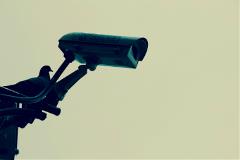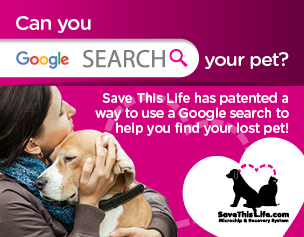Improving the Security of Your Practice

After spending hours at the clinic it can be nice to head out after locking up for the day. When looking forward to the evening the last thing you’ll want to enter your mind is whether or not your facility is secure enough to keep your employees and clients safe. The following information provides helpful security tips to consider for your practice.
Security Tips for Veterinary Practices
Employees
- Create work schedules that ensure that no employee ever works alone
- A plan should be established to outline the steps to take in the event of a crime
- Train all staff members, include the steps to take to:
- Contact authorities that a crime is being or has been committed
- Spot, prevent and react to a crime situation
- Comply with criminal’s instructions during a crime
- Remember characteristics that will identify criminals
- Secure the area while waiting for police
- Contact clients to inform of scheduling changes, cancellations, referrals.
Cash
- Having cash on premises increases the risk of being robbed.
- Require that cash in the register be kept at less than $50 at all times
- Establish a system that regularly transfers the excess cash from the register to a drop safe that is locked, out of sight, and fastened securely to prevent the chance of stealing
- Never send an employee to the bank to make a cash deposit on their own
- Avoid routinely scheduled trips for taking the cash to the bank
Inside Building
- Areas of Accessibility
- Eliminate areas that offer places to hide
- Remove clutter
- Utilize displays that are not so big someone could hide behind them
- Instead of a coat rack or closet, use coat hooks
- Install angled mirrors that provide a way to see all areas of the practice with a glance
- If possible, control access by locking all doors that are not for client use
- Eliminate ease of access to space behind the admission counter
- If money is handled or kept within facility, secure the area to prevent access from anyone without a designated need
- Keep waiting room bathroom doors locked
- Areas requiring increased security
- Establish monitoring ability with closed-circuit TV cameras in areas, for example:
- Entrances and exits
- Cash-handling areas
- Areas designated for:
- Storing pharmaceuticals
- Workstations with computers
- Rooms with expensive equipment that could be easily removed
- Kennels
- The use of a video recorder can provide images that will be useful to police in case of a crime
- Installation of a loud alarm system to deter crime, for example one that can be:
- Quickly and easily triggered by an employee if the situation arises
- Set to signal for help should someone attempt to gain access to the property through doors and/or windows during hours business is closed
- Prominently posting information for all to see will help to deter crime, for example:
- Warning signs that state the facility is currently being monitored for crime (even if it isn’t)
- Height markers on all doorways
- Signs posted at the register stating “minimum cash on premises”
- Decals on the register that inform “no access”
Outside Building Area
- Entryways
- Facilities with more than one entrance increase the security risks
- Designate one legitimate entrance and keep any other doors securely locked
- Avoid recessed doorways that could allow someone to hide
- Lighting
- The majority of crimes occur in the dark of night
- Facilities without proper outdoor lighting make it easy for someone to be on facility grounds and remain unseen
- Lighting should provide visibility for anyone moving in and out of building, across grounds, and within parking lot
- Landscape
- Bushes and hedges help to make a facility look attractive and inviting, but they can also help to provide someone with a place to hide
- Make sure there is no place for someone to hide to gain access to the facility by trimming bushes and hedges that are within six feet of the doors or windows
- Keep upper branches of trees trimmed and away from windows on top floors
- Maintain lines of open sight between the inside and outside areas of the building
- Fencing
- Fencing can provide someone with the ability to hide
- Even when used as a privacy fence, make sure the height is not so tall that visibility is restricted
- If there are gates near facility entrances, make sure they can be secured to remove the chance of being pushed open quickly by someone hiding inside the fenced in area
Taking steps to deter criminal activity increases the overall safety of a practice. Want additional tips that will benefit your practice? Contact your Covetrus representative by calling 855.724.3461.
Sources:http://quickbooks.intuit.com/r/money/keep-your-business-safe-from-repeat-robberies/
http://www.safest.org/weblog/2016/01/11/5-tips-keep-your-business-safe/

Working Here
Our team members are encouraged to be the best they can be... at Covetrus we believe we impact one another.
Learn MoreNews & Events
FDA Cautions Pet Owners Not to Feed Texas Tripe Inc. Raw Pet Food Due to Salmonella, Listeria Monocytogenes
The U.S. Food and Drug Administration is cautioning pet owners not to feed their pets any of the Texas Tripe brand raw frozen pet food listed below because several samples of Texas Tripe raw pet food have tested positive for Salmonella and/or L. mono.
Careers
Are you looking for a place to let your talents shine? At Covetrus, we help our practitioner customers better serve their patients and take pride in providing the best customer experience possible. Search our open positions to see our available opportunities.
Newsletter
Stay current with what’s going on with Covetrus, subscribe to receive our newsletter and email communications. Subscribers will receive the latest information in practice management, sales and marketing, animal health, and more.



-3-(1).png?sfvrsn=2d806d73_0)

Leave a comment